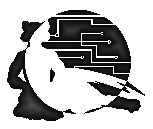|
URL Explanation Page
URLs, or Uniform Resource Locaters, are vital to
your time on the internet. They tell your software what type of resource,
and exactly where that resource is in the vast world of the internet.
They are very picky in how you type them. No spaces can be added, no
commas instead of periods. The slashes must go this way / and NOT this
way \. And they are case senstive, meaning "A" does not equal "a".
A full URL can include several parts. It MUST
include a protocol. If you don't type one in, web browsers will
assume it
is "http://" the web page protocol. There are several others, some are
starting to fade from the internet. NOTE: An Email address will be of the
form username@someplace.com . If you have a protocol, such as http:// ,
or / or other odd chars, it's not a proper email.
Depending on the system, you may have several
words seperated by "." and these may refer to a particular machine
name or an alias for a web server directory, but there will always be
two final words separated by a period. The first will be a Primary
Domain, which you can purchase. These names are owned by a single
person/company. I purchased the primary domain "felitaur". Then you have
the top level domains (TLD), which are limited. They divide the
internet up
into large chunks.
So, the full domain name gets you to the right
computer, then, often, you have sub directories after that. They are
always separated by "/" . Finally, you have the file name and extension.
The extension tells you what type of file it is, and the most common is
.html or .htm, which is a web page. Often no filename.extension is used,
so the web server looks for the default homepage name which on most
systems, mine included, is index.html.
- Entering an URL (web address)
- http://mcmuse.mc.maricopa.edu/interent/content.html
- Protocols
- http:// (World Wide Web)
- ftp:// (file transfer protocol)
- gopher://
- telnet://
- news:
- mailto: (for web page use only, news: and
mailto: have no //)
- username@somewhere.com (standard email
address form, usually NOT for web use)
- Machine name, subnet name etc
- Primary Domain
- Top Level Domains
- .edu (educational)
- .mil
- .gov
- .org
- .net
- .com
- .ca, .fr, .au etc
- Pathname and directories (note ~username indicates a
users home
directory)
- filename
- default filnames (often index.html)
- filename extensions
- .htm or .html
- .shtml (server side includes)
- .asp (Active Server Pages)
- .php (Hypertext Pre Processor, or personal home
page)
- .jsp (java servlet pages)
- .swf (flash animations)
- .txt
- .jpg or .jpeg
- .gif
- .exe
- .mid
- .pdf
- .wav
- .zip
- .gz
- .tar or .tgz
- .ram
- .ps
|


